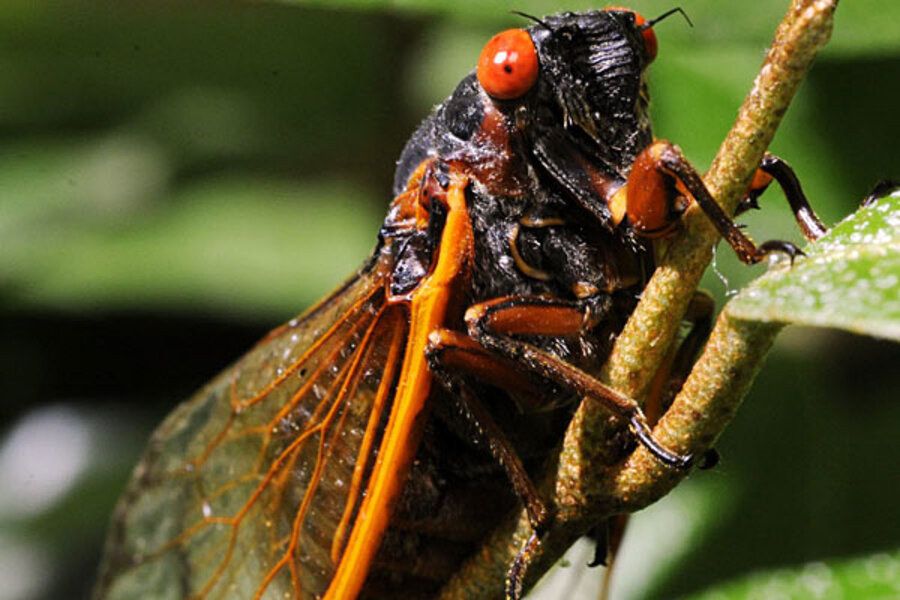Cicadas re-emerge after 13-year absence
Loading...
| New York
If you live in the South, you already know the cicadas are back. The red-eyed, noisy insects found in southern states emerge only once every 13 years, and the last time they caused their ruckus was in 1998. That means it's time for the 120-decibel chirping again.
But don't worry, aside from the annoying noise, cicadas are harmless to humans. They don't sting or bite, although if one sits on you for long enough it might think you're a tree and stick you with a feeding probe. (Therefore, if a cicada lands on you, don't let it get too comfortable.)
Cicadas, often mistakenly called locusts, can be found on every continent except Antarctica. There are many species of the insect, the most famous of which in North America is the periodical cicada. In the South, they emerge only once every 13 years. In the North, the cicadas stay dormant underground for 17 years.
While some simply find the noise a nuisance, gardeners have more cause to worry. The "harmless" cicadas aren't so harmless to young and ornamental trees. The females slit any branches thinner than a pencil down the middle and lay their eggs in the crevices. This can cause flagging in smaller, younger trees, so gardeners usually cover them with protective netting before the first cicadas begin to emerge.
The cicadas in the South began appearing on Monday night and have been sighted crawling out of their exoskeletons in South Carolina, Georgia, Mississippi, North Carolina, and Arkansas.
Cicadas in North America are creamy white when they emerge from their exoskeletons, but once they harden they become a much darker color. Males are noisier than females and are able to belt out their mating chirp 3-4 days after they first appear, so expect the noise to start before the end of the week.
Greta Beekhuis, who lives in Pittsboro, N.C., told USA Today, "There are billions of them in the trees... The air is just thick with them."
In many countries, cicadas are eaten. While this is not a North American tradition, one veterinarian pointed out that cicadas are healthy, and not toxic, telling the Huffington Post that she had “even heard of people storing them in a freezer for dog treats."





